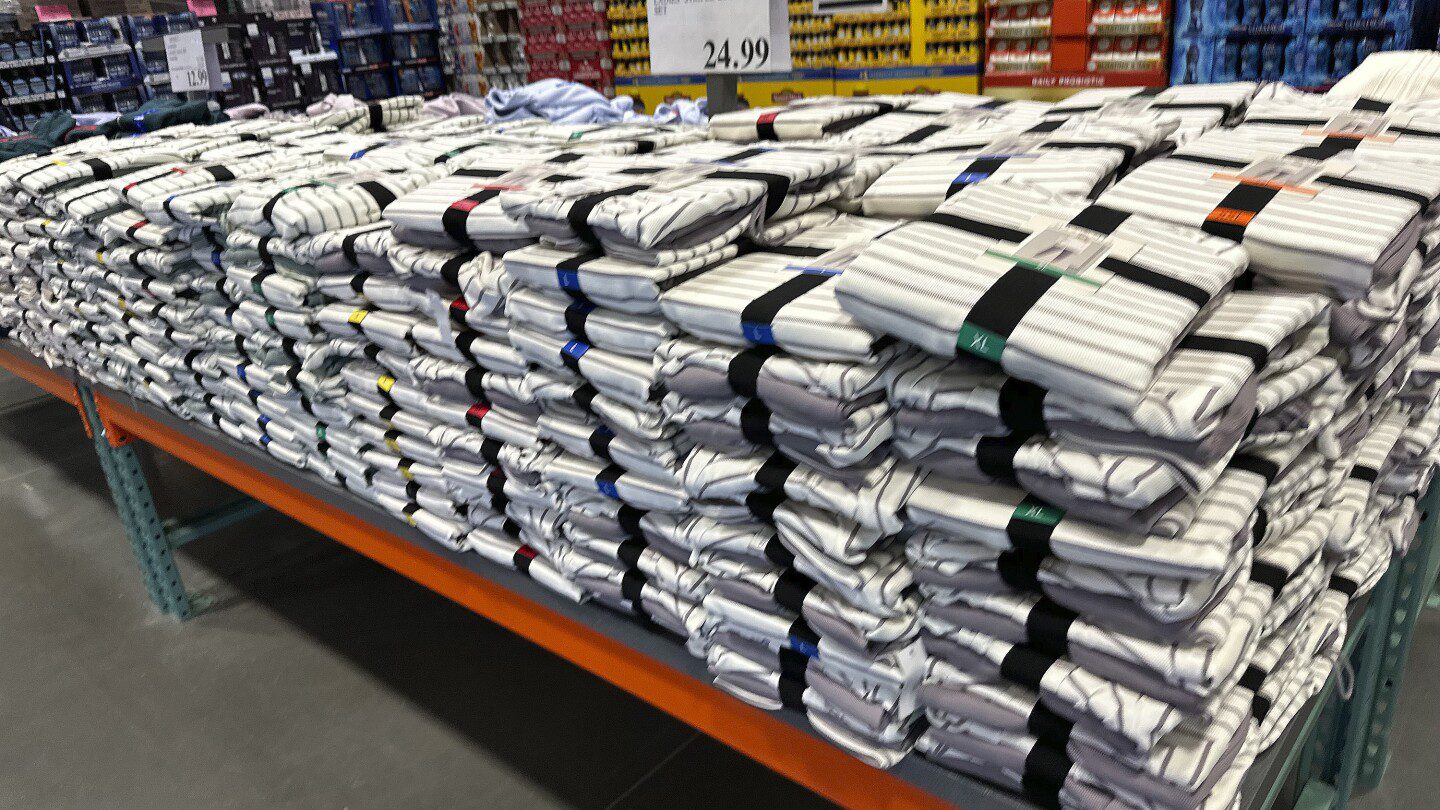
WASHINGTON (AP) — Retail sales across the U.S. experienced a significant decline last month, largely attributed to unseasonably cold weather that kept many Americans indoors, resulting in decreased sales at car dealerships and various retail outlets.
In January, retail sales fell by 0.9% compared to December, as reported by the Commerce Department. This decline marked a sharp contrast to the healthy increases observed in the previous two months and represented the largest drop in a year.
According to Pantheon Macroeconomics, January’s average temperature was the lowest recorded since 1988, particularly affecting the typically milder Southern regions. Additionally, devastating fires in Los Angeles may have contributed to the decreased spending.
The data did not support expectations that consumers would rush to make purchases ahead of proposed tariffs by President Donald Trump. However, December sales figures were revised upward. It’s possible that many consumers opted to economize in January after indulging during the holiday shopping season.
This slowdown in retail sales might provide the Federal Reserve with some comfort after the concerning inflation data for January, suggesting that the economy may not be overheating as previously feared.
The decline in retail sales indicates that, while the economy is still growing, the rate of expansion is likely to slow down in the first quarter of this year, following a 2.3% annual growth rate recorded in the last quarter of the previous year.
Last month, sales at auto dealerships took a hit, declining by 2.8%. Retail sectors such as furniture stores and home and garden centers also saw downturns. Interestingly, even the usually robust online retail segment faced a 1.9% decrease. In contrast, sales rose at general merchandise stores, which include major retailers like Walmart and Target, as well as at restaurants and bars.
Beyond frigid weather, the sales decline may also reflect dwindling consumer confidence, as noted in recent surveys conducted by the Conference Board and the University of Michigan. Nevertheless, consistent job growth and wage increases point to overall economic expansion. Just last week, the government reported that the unemployment rate dropped for the second consecutive month to a low 4%.
Despite the Federal Reserve’s attempts to curb inflation through increased interest rates, prices have crept higher in the last month, primarily due to rising grocery prices, particularly egg costs. These grocery price hikes are burdening American households.
Many struggling retail chains are now compelled to reduce expenses and shut down underperforming locations.
For instance, the craft retailer Joann recently filed for Chapter 11 bankruptcy protection for the second time in a year and announced plans to close around 500 stores, which constitutes more than half of its U.S. locations.
Additionally, Liberated Brands, which owns well-known names like Quiksilver, Billabong, and Volcom, filed for bankruptcy last week while also planning to close several stores.
Retailers may face an increasingly challenging landscape as President Trump intensifies tariff threats, which have the potential to drive up consumer prices. Recently, Trump announced his intention to impose “reciprocal” tariffs on nations with high duties on U.S. exports. He has already implemented a 10% tax on goods imported from China and indicated plans for 25% tariffs on steel and aluminum imports.
David French, the executive vice president of the National Retail Federation, cautioned that these import taxes could lead to increased prices for consumers.
“While we back the president’s initiatives to address trade barriers and imbalances, the scale of this undertaking is substantial and could severely disrupt supply chains,” French remarked on Thursday. “This scenario may result in increased costs for American families and diminish their spending power.”
Retail executives express difficulty in navigating the unpredictability surrounding tariff policies under Trump’s administration.
Kim Tobman, CEO of Bouqs, an online floral retailer based in Marina del Rey, California, stated that most of their vases are sourced from China. While she initially anticipated challenges from the 10% tariff, she doesn’t foresee raising prices just yet but is exploring sourcing vases from alternative countries like Vietnam and Indonesia.
“At this moment, we feel equipped to absorb the costs,” Tobman noted.
Last month, she faced the challenges posed by Trump’s fluctuating tariff decisions during his confrontation with Colombia, a major flower exporter, after the country initially declined to accept flights carrying deported migrants. In response, Trump quickly introduced retaliatory measures, including a 25% tariff on Colombian exports to the U.S., which could have escalated further. Ultimately, the Colombian government agreed to Trump’s demands and the tariffs did not materialize for Bouqs’ flower sourcing.









